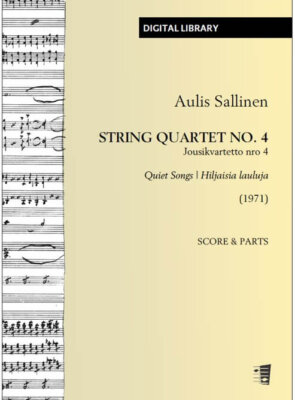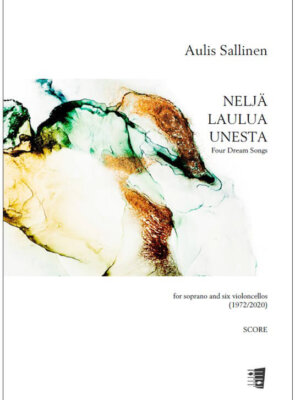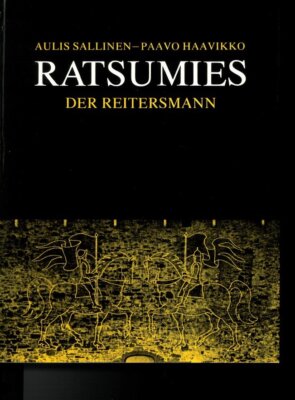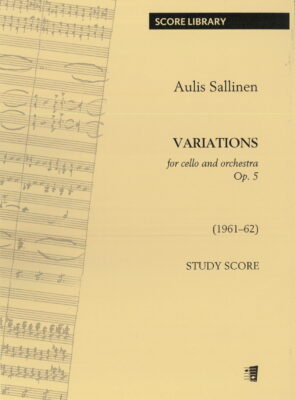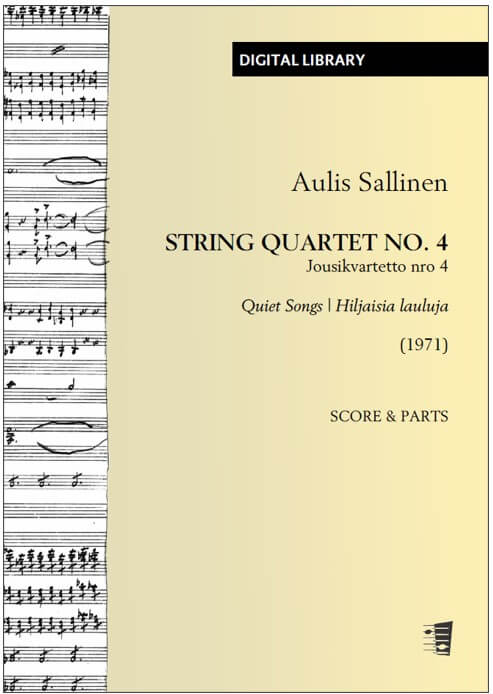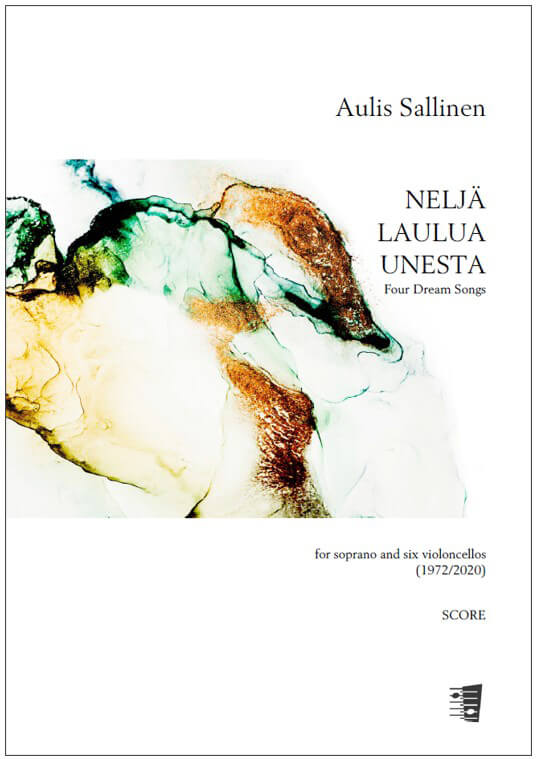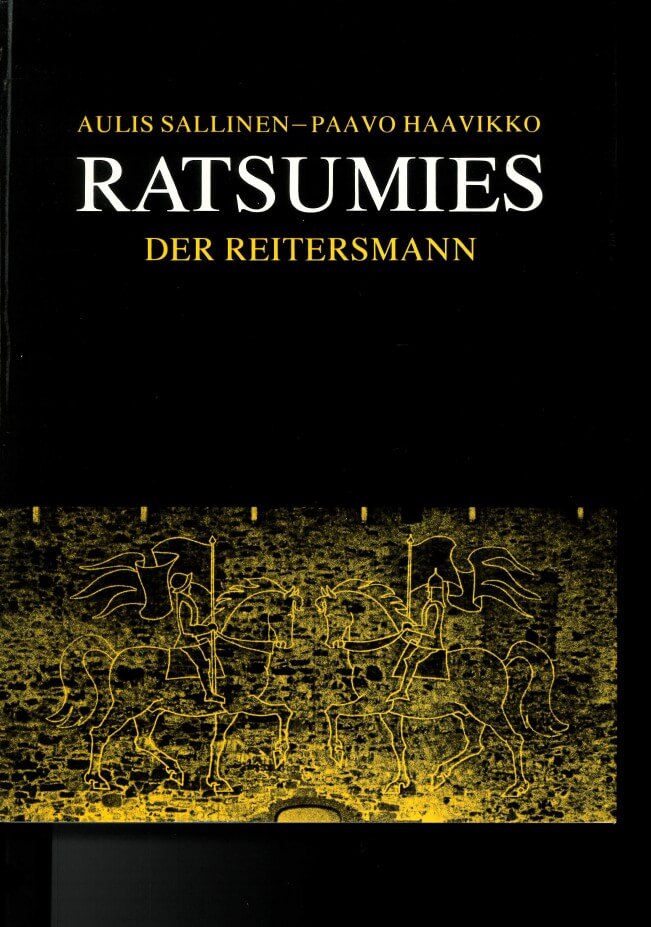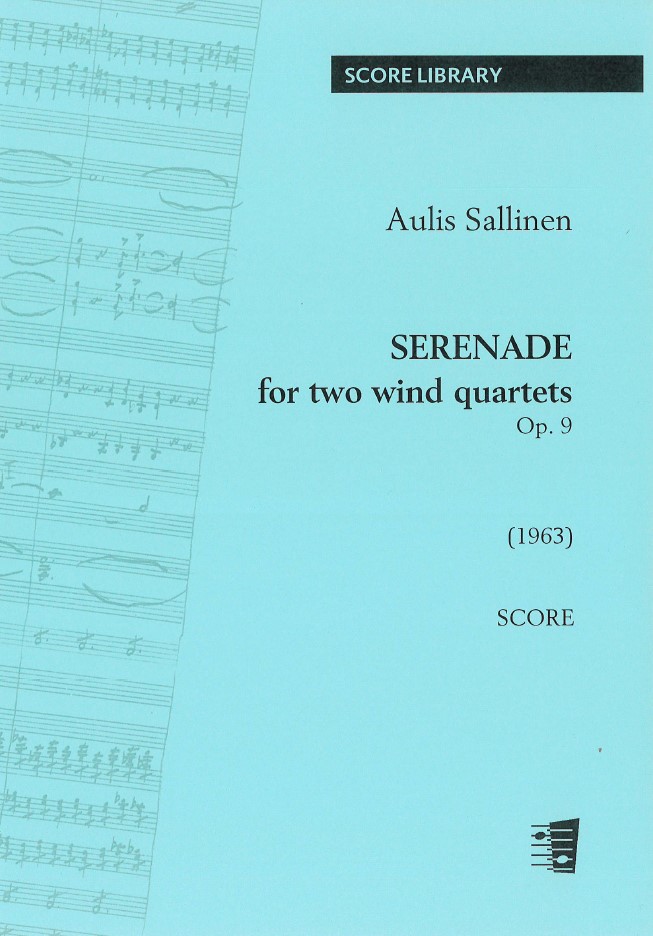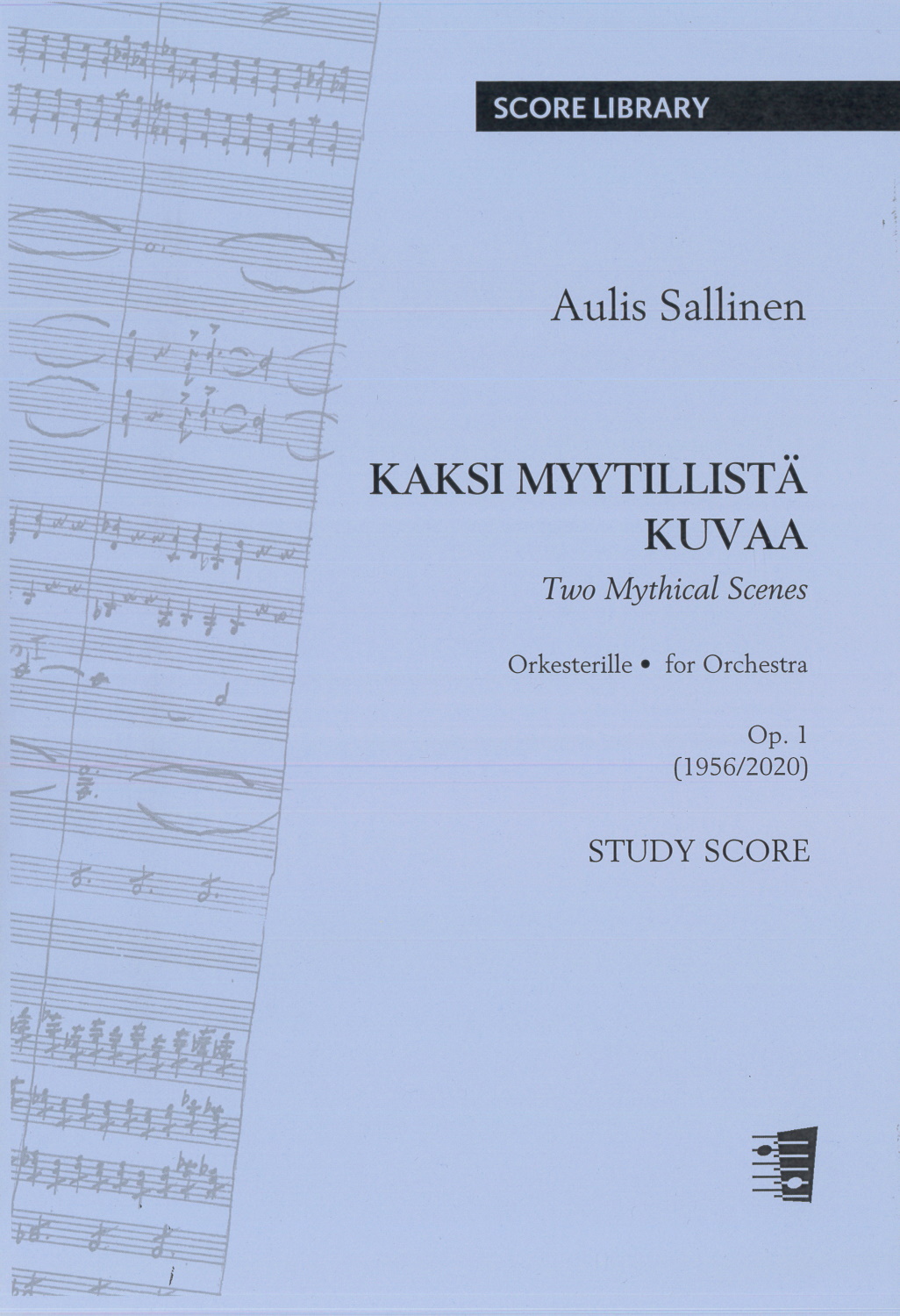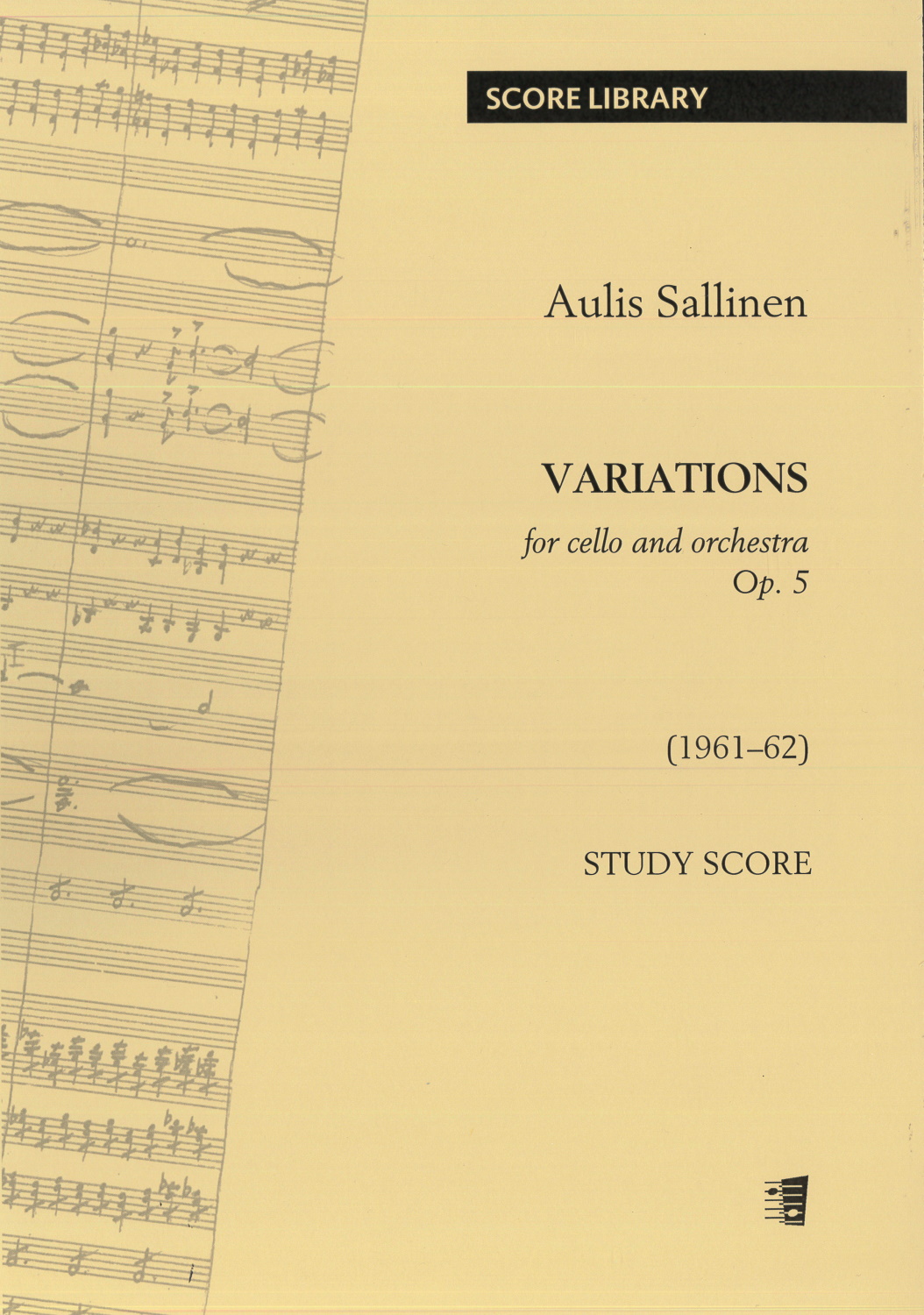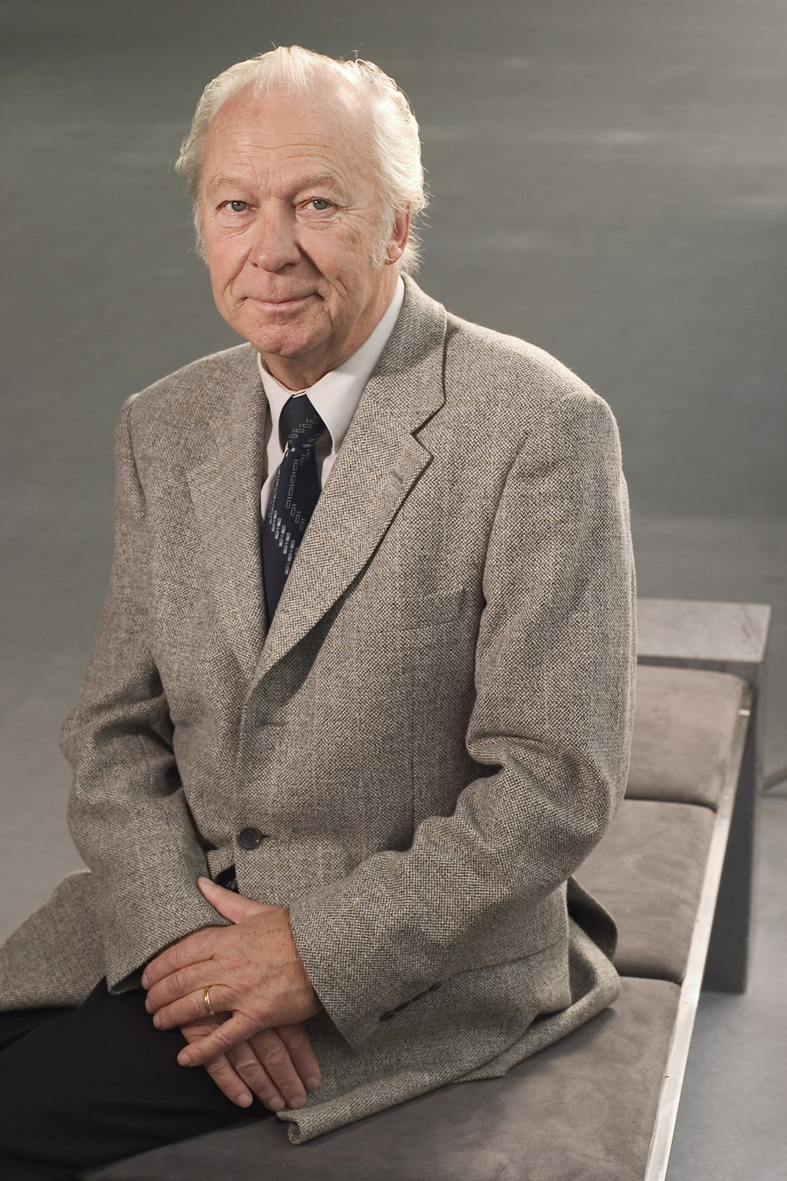
Sallinen, Aulis
Aulis Sallinen (born on 9 April 1935) studied composition with Aarre Merikanto and Joonas Kokkonen at the Sibelius Academy in 1955–60. He subsequently worked as manager of the Finnish Radio Symphony Orchestra and as a teacher of composition at the Sibelius Academy, becoming Artist Professor in 1976.
Since the early 1970s, Sallinen’s music has been characterized by a strong sense of tonality, simple themes, clear forms and above all repetition, already manifest in the motifs themselves and their use. Repeated notes, recurring linear seconds and characteristic rhythmic motifs occupy a central position in his themes, while each motif is repeated many times before moving on to the next. The harmony is dominated by triads often filling out to create clusters. All these features have made Sallinen’s music accessible and popular. Notable examples are to be found in the Suite Grammaticale (Kieliopillinen sarja, 1971), Lauluja mereltä (Songs from the Sea, 1972) for children’s choir, and in some of his string works such as the String Quartet No. 4 ‘Quiet Songs’ of 1971 – which at times have echoes of Finnish folk music.
Other compositions of this period – such as the Chorali for wind orchestra (1970) are, in places, reminiscent of late Sibelius in their sparse severity. The classic simplicity of the 1970s gives way to a fuller, more versatile mode of expression and a more personal approach to large-scale formal shapes in the 1980s.
Sallinen is especially known for his successful operas, such as The Horseman (Ratsumies) composed to a libretto by Paavo Haavikko and premiered in 1975. It was Sallinen’s first opera and the winner of the Savonlinna Opera Festival competition. It marked the beginning of the Finnish “opera boom” that precipitated a wave of Finnish operas.
Fennica Gehrman has published most of Sallinen’s early works, including Aspects of Peltoniemi Hintrik’s Funeral March, Mauermusik, Suite Grammaticale and Concerto for Violin and Orchestra. Latest publications include Variations for Cello and Orchestra (1961-62) which is Sallinen’s first piece for the cello, the instrument that would later be one of his favourites, and Two Mythical Scenes Op. 1, a work completed in 1956 when Sallinen was Aarre Merikanto’s composition student. An exciting addition to our publishing catalogue is Shaka – Melodrama for reciter and ensemble (world premiere at the Naantali Music Festival on 5. June 2025). The story takes us to southern Africa, where the warrior king Shaka (1787-1828) reflects on his conquests both in war and love.
Aspects of Peltoniemi Hintrik's Funeral March
Aspekteja Peltoniemen Hintrikin surumarssista (1969)
for string orchestra
str
Duration: 13
Chorali
(1970)
for wind instruments, percussion, harp and celesta
4(II+picc)444(IV+cfg)-6442-03-hp-cel Percussione: Tamburo piccolo, Gran cassa, Campanelli, Vibrafono, Campana (in D)
Duration: 13
Concerto for Violin and Orchestra
(1968)
1(+picc)111-1110-02-hp-pf-str Perc: Tamburo militare, Gran cassa, Tamtam, Marimba, Vibrafono
Duration: 16
Four Dream Songs
Neljä laulua unesta (1972)
for soprano and orchestra
333(III+bcl)3(III=cfg)-4330-11-hp-cel-str Percussion: Vibraphone, Glockenspiel, Marimba 1. Unesta tehty mies / Man Made from Sleep 2'30 2. Kehtolaulu kuolleelle ratsumiehelle / Cradle Song for a Dead Horseman 3'00 3. On kolme unta sisäkkäin / Three Dreams, Each within Each 5'00 4. Ei mikään virta / There Is No Stream 4'30
Duration: 15
Four Dream Songs [Reduced version]
Neljä laulua unesta (1972)
for soprano and orchestra
2(II+picc)222(II+cfg)-4220-11-hp-cel-str Percussione: Glockenspiel, Marimba, Vibrafono 1. Unesta tehty mies / Man Made from Sleep 2'30 2. Kehtolaulu kuolleelle ratsumiehelle / Cradle Song for a Dead Horseman 3'00 3. On kolme unta sisäkkäin / Three Dreams, Each within Each 5'00 4. Ei mikään virta / There Is No Stream 4'30
Duration: 15
Mauermusik
(1962)
for orchestra
3(II+picc;III=afl).2.3(III=bcl).2(II=cfg)-3.2.2.1-str
Duration: 10
Quattro per quattro [SALES MATERIAL]
(1965)
for isntrumental ensemble
oboe (or flute or clarinet), violin, violoncello, harpsichord
Duration: 17
Ratsumies
opera in three acts
3(III+picc)33(III+bcl)3(III+cfg)-4331-13-hp-cel-str Soloists: S, MS, A, T, Bar, BBar, 2B mixed ch, male ch Percussione 1: Timpani, Tamburo militare, Tamburo piccolo, Tamburo de basque, Gran Cassa, Piatto, Tam-tam, Glockenspiel, Marimba, Vibraphone, Campane Percussione 2: Tamburo militare, Tamburo piccolo, Tamburo de basque, 3 Tom-toms, 3 Bongos, Gran Cassa, Piatto, Tam-tam, Glockenspiel, Marimba, Vibraphone, Campane, Guiro
Duration: 120
Ratsumies [version for smaller orchestra]
opera in three acts (1974 / 1990)
2(II+picc)22(II+bcl)2(II+cfg)-4221-02-hp-cel-str Alternative part for 2-3 keyboards available (replacing harp, celesta and some percussion) Soloists: S, MS, A, T, Bar, BBar, 2B mixed ch, male ch Percussione 1: Timpani, Tamburo militare, Tamburo piccolo, Tamburo de basque, Gran Cassa, Piatto, Tam-tam, Glockenspiel, Marimba, Vibraphone, Campane Percussione 2: Tamburo militare, Tamburo piccolo, Tamburo de basque, 3 Tom-toms, 3 Bongos, Gran Cassa, Piatto, Tam-tam, Glockenspiel, Marimba, Vibraphone, Campane, Guiro
Duration: 120
Shaka
Melodraama lausujalle, yhtyeelle ja äänitteelle (2024)
for recitor, ensemble and tape
recit-tape-pf-perc-str(11111) Percussione: Tamburo militare, 3 Tom-toms, 3 Bongos, Campanelli, Marimba Äänite sisältää 15 katkelmaa Yleisradion v. 1969 tuottamasta melodraamasta Chaka.
Duration: 30
Suita grammaticale
(1971)
for children’s chorus and orchestra
3perc-kantele-str
Duration: 14
Two Mythical Scenes
(1956/2020)
for orchestra
2(II+picc)222-3230-12-str Percussione: Tamburo militare, Gran cassa, Marimba, Campane
Duration: 12
Variations for Cello and Orchestra Op. 5
(1961-62)
2(II+picc)12(II+bcl)1-1111-04-hp-str Percussione: Tamburo militare, Tamburo rullante, 3 Tom-toms, Gran cassa, Piatto, Tam-tam, Campanelli, Marimba, Triangolo
Duration: 18
Variations sur Mallarmé
(1967)
for orchestra
2(II+picc).2.2(II+clar.b).2(II+c.fag)-4.3.2.1-1.2-pf-hp-str Percussion: Glockenspiel, Marimba, Triangolo, Castagnettes, Tamburo rullante, Piatto sospeso, Piatti, Gran cassa
Duration: 27

